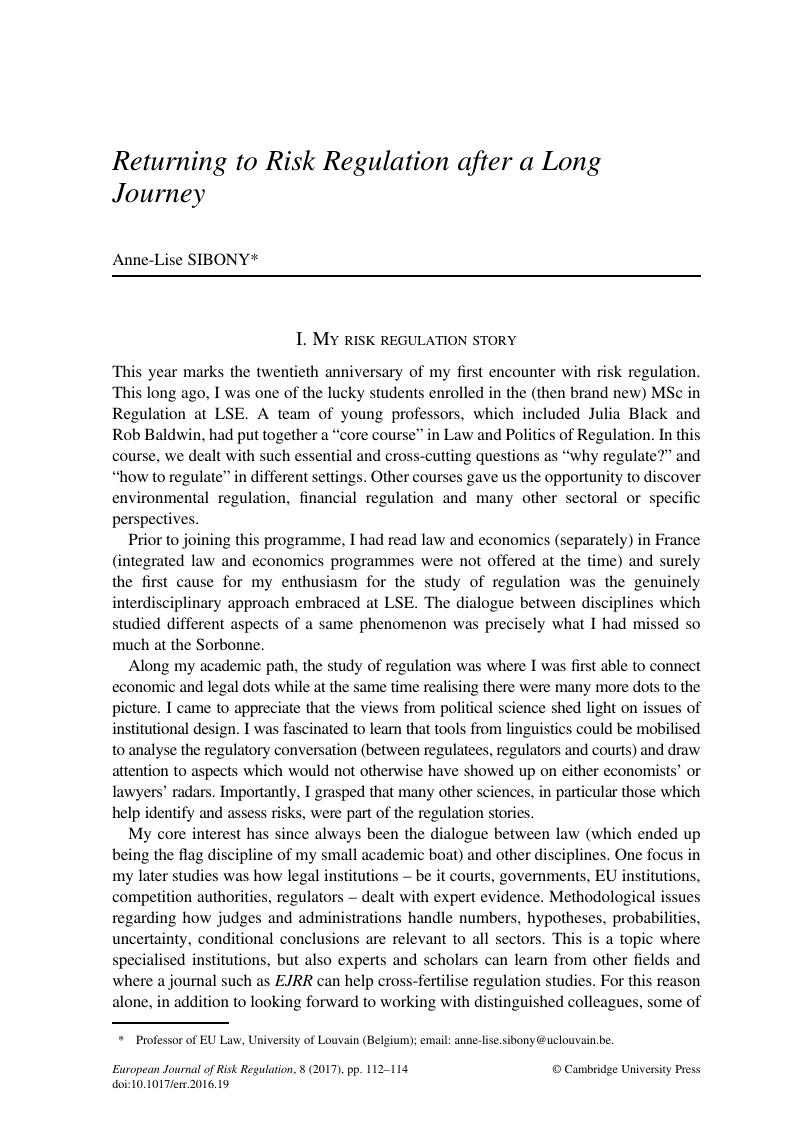No CrossRef data available.
Published online by Cambridge University Press: 26 April 2017

Professor of EU Law, University of Louvain (Belgium); email: anne-lise.sibony@uclouvain.be.
1 The seminal work by K&T earned them the Nobel Prize for Economics in 2002 “for having integrated insights from psychological research into economic science, especially concerning human judgment and decision-making under uncertainty”. For a very accessible account of this research, see D Kahneman, Thinking, Fast and Slow (New York: Farrar, Straus and Giroux 2011).
2 For some example in various walks of regulatory studies, see Rajeev Gowda, “Heuristics, biases, and the regulation of risk” (1999) 32 Policy Sciences 59, doi:10.1023/A:1004340726008; SA Drakopoulos, and I Theodossiou “Workers’ Risk Underestimation and Occupational Health and Safety Regulation”, MPRA paper, 2011, <https://mpra.ub.uni-muenchen.de/id/eprint/29643>; CR Sunstein and R Zeckhauser, “Overreaction to Fearsome Risks” (2011) 48 Environmental and Resource Economics 435, doi 10.1007/s10640-010-9449-3; C Sunstein, Valuing Life: Humanizing the Regulatory State (University of Chicago Press 2014) ch 7; A Alemanno and others, Better Business Regulation in a Risk Society (Springer 2013) esp. ch 17 by all four editors of the volume.
3 See e.g. E Shafir (ed.), The Behavioral Foundations of Public Policy (Princeton University Press, 2013).